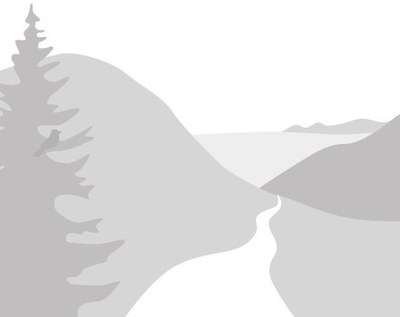
Trip Report
The Tooth/South Face
- Mon, Apr 4, 2016
- The Tooth/South Face
- Climbing
This was a successful climb with a stellar team of rope leads and very capable students.
1. Weather
We had a lovely bluebird day. The temperatures were predicted to be in the mid-50's, which made for soft snow, even in the morning. We opted not to use snowshoes, and the approach/descent weren't too bad. Regardless, the soft snow probably cost us a couple of hours.
2. Approach
There was evidence of snow slides on the East-facing slopes as we headed up the Snoqualmie South Fork drainage. During the ascent of the valley below Bryant & Hemlock peaks we noticed a lot of avalanche activity on the SE slopes. Chair Peak, in particular, showed heavy evidence of slides (a 3/28 slide had been reported to NWAC). Southern & Southwestern slopes seemed to be stable. A small snow bridge made the step over the moat to the ridgeline straightforward, but I wouldn't expect it to last another week in this warm weather. If you're heading up there soon, plan to negotiate the moat to the ridgeline.
3. Route conditions
Pitch 1 is in good condition, although there is a lot of snow at the top of the pitch. Pitches 2 & 3 still have significant snow and required an ice axe as well as slinging small trees for protection. We opted to take the catwalk, and it is completely clear of snow & ice.
4. Summit
In order to reach the usual rap station at the top of the face pitch you would have to negotiate a 50° snow slope approximately 40' long with significant exposure. Since I did not want the team to make this risky move, we decided to establish an anchor on a large boulder NW of the summit, approximately 60' from the usual anchor. This decision meant leaving two irretrievable ropes behind, but I was happy to make that call in the interest of safety. Luckily, a party climbing the route on 4/2 has retrieved our ropes and notified us via CascadeClimbers.com.
5. Descent
The assistant leads did a great job of setting up the rappels, checking autoblocks, and ensuring everyone's safe return to the base of the route.
6. Time
Although we had a fun and successful climb, it took much longer than anyone would have liked (we rapped off in the dark). There were several contributing factors:
a. Group size
I originally set this up as a 6-person climb, but added another rope to accommodate additional interested students and rope leads. Even with a strong & capable team, an additional rope slows things down to an unacceptable speed. I plan to limit my future trips to 6 climbers.
b. Turn-around time
By the time we reached the base of the route, it was apparent that we would not be able to complete the climb by our original turn-around time. Since I was confident in the rope leads, and the students had performed well on the approach, I gave the group the option to forgo the turn-around time. Although I explained that this might mean a descent in the dark, I should have done a better job of communicating two things:
i. Outlining the risks involved
ii. Making it OK to say “No” and vote for the original turn-around time
c. Team order
Since I am very familiar with this route, I led the first rope. However, I should have insisted that the strongest combined rope team bring up the rear (the strongest combined team followed immediately behind my rope). In consequence, a gap developed between the third and fourth team that led to anchor & route confusion at the top of the second pitch.
7. What went right
As noted above, the rope leaders were very capable. Their experience as climbers and mentors was evident in problem solving, decisive action, mentoring & teamwork.
Unlike most groups of first time climbers, there were no problems with fitness, attitude or motivation amongst the basic students. Although they were in a situation well beyond a typical basic climb, they demonstrated calm and good humor.
Chris Hill stepped up as a proactive MOFA leader, and acted as an additional leader to guarantee safety on the rappels.
We were well equipped with radios, which simplified communication amongst a large team.
We had adequate gear to establish an alternate rappel anchor at the summit.
All team members had appropriate gear, nutrition & hydration.
Throughout the climb, everyone worked as a team.
8. Synopsis
My only unshakable goal for any climb is that everyone return home safely. I would not characterize this as an "epic" climb, but the time and conditions made it significantly more demanding than a typical basic climb. With a less capable team of rope leaders, or less motivated students, it could have turned into a bad experience. As it is, I think we all had a great alpine climb and took away some good lessons for the future.
 Tim Nagle
Tim Nagle
 admin
admin